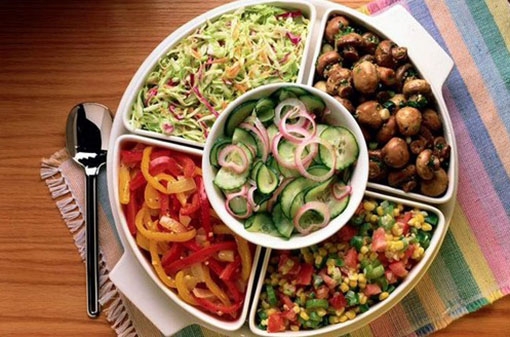It has been reported that Asians, especially East Asians, are more likely to suffer from diabetes. If diabetes is not controlled in time, many complications will occur. So diabetic patients should pay special attention to their diet. Do not violate the diet taboo of diabetic patients. Next, I would like to introduce the seven dietary taboos and daily dietary principles of diabetes, which are very helpful for the diet of diabetic patients. Please have a look.
Seven dietary taboos of diabetes

The diet taboo of diabetes I: "eating soft is afraid of hard"
Nutritionists have found that eating softer foods increases blood sugar faster. If the rice is boiled into congee, the starch in it has been partially converted into dextrin, which is easier to digest and absorb than starch, and quickly converted into glucose in the human body, making the blood sugar rise rapidly. The longer the porridge is boiled, the thicker the porridge is, and the faster the blood sugar rises after eating. Therefore, diabetic patients had better not "eat soft and afraid of hard". To "eat hard but not soft", the food with hard taste digests slowly, so it is not easy to make blood sugar rise rapidly.
Diet taboo of diabetes II: eating "alone"
Although the food with high glycemic index has a greater impact on postprandial blood glucose, if you choose the food with low glycemic index, it is easy to lead to nutrition imbalance. Mixed eating is an effective way to control postprandial blood sugar. In other words, the high glycemic index food and the low glycemic index food are mixed to reduce the impact of food on postprandial blood glucose.
The third dietary taboo of diabetes: "draw cake to satisfy hunger"
Many diabetics think that diet therapy is hunger therapy. They eat very little or even no main food (grain) in every meal. Do not eat staple food or eat too little, the body needs a lack of glucose source, the body must use fat to release energy, at this time will be accompanied by ketone body generation, excretion through the kidney can appear ketonuria. Therefore, whether it is healthy people or diabetic patients, the daily staple food should not be less than 150 grams, otherwise it is easy to develop ketosis.
Diabetes diet taboo 4: overeating
Many diabetics often have abdominal distention, burping, nausea, vomiting, etc. after a meal, they also have a sour odor, as if the food they eat is piled in their stomach. When these symptoms appear, we should be alert to the possibility of diabetic gastroparesis. Eating regularly is the basic treatment of diabetic gastroparesis. Patients should absolutely avoid overeating, and eat regularly and quantitatively every day. The food allocation of early, middle and late meals is 1 / 3 respectively.
Diabetes diet taboo 5: eat too much salt
Salt contains sodium, but the environment of diabetic patients is very sensitive to the change of sodium concentration. When the concentration of sodium is high, it will increase blood volume, increase the weight of gravity and the burden of kidney. Under normal circumstances, an adult's daily salt intake should be 6G. Diabetic patients should be 4-5g, such as hypertension, coronary heart disease, cerebrovascular disease and kidney disease, which should be controlled at 3-4g per day, including soy sauce. In general, 20 ml soy sauce contains 2-3 g salt.
Diet taboo of diabetes six: eat fruit immediately after meals
Eating fruit immediately after meals will raise blood sugar and increase the burden of islets of Langerhans. In addition, eating fruit immediately after meals will be blocked in the stomach by the non digestible fat and protein that are eaten first. If the fruit stays in the stomach for too long, it will affect the digestive function and cause flatulence. The best time to eat fruit is between meals. Because the stomach and intestines are empty at this time, the vitamins and minerals in the fruit can be absorbed quickly when the stomach is empty, and the flatulence can be avoided.
Diet taboo of diabetes seven: drinking carbonated drinks
Diabetic patients should not drink carbonated drinks containing sugar, such as coke, Sprite, etc. If diabetic patients sweat more, do not make up water in time, or drink a large number of sugary drinks, it is very easy to lead to diabetic non ketotic hyperosmotic coma (complications of type 2 diabetes, manifested as hyperglycemia, severe dehydration, consciousness disorders).
Five dietary principles of diabetes

1. The most important thing is to control the amount.
2. It is also rice, which is made into porridge. It will be absorbed too fast. It is not suitable for diabetics to eat more.
3. Coarse grain is better than fine grain, which helps intestinal peristalsis and digestion; brown rice has less heat than rice.
4. It's also green vegetables. There's a big difference between one scoop of oil and one scoop of oil. It's recommended to reduce the oil.
5. Control staple food, but don't be reckless about snacks. The calories of snacks are also high.
In the view of doctors, there are many misunderstandings in the diet of diabetic patients. For example, there is no saying that diabetic patients cannot eat and can only eat noodles in medicine. The most important thing is to pay attention to the content of salt, oil and sugar, control the intake value of calories, and eat fish, meat and seafood.









